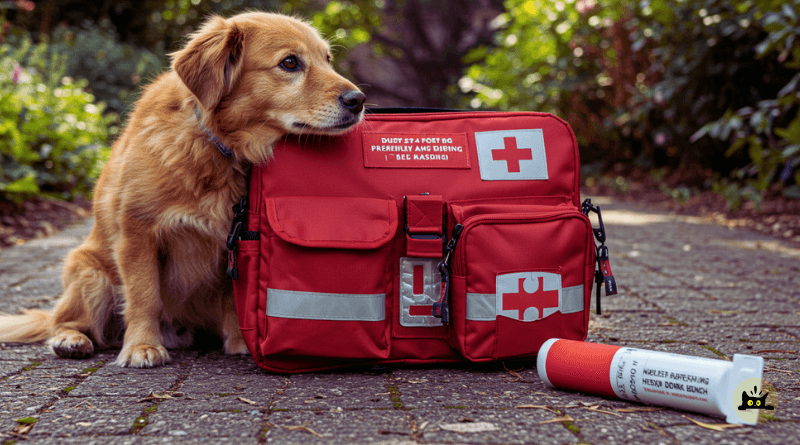Recognizing Visible Wounds and Hidden Harm
Emergency pet first aid is crucial when your dog or cat gets hit by a car or another object. Quick action can make the difference between a full recovery and life-threatening complications. Accidents happen in driveways, on neighborhood streets, or even in the yard. As soon as you notice an accident, look closely for signs that you can see and clues that may point to deeper injury.
Visible Signs of Hurt
- Scrapes or deep cuts on the fur and skin
- Swelling or bruising around the chest, belly or limbs
- A leg that your pet will not put weight on or that looks bent oddly
- A bump on the head or a cut near the eye or ear
- Sudden lump or quick puffiness on the side of the body
Behavioral Clues of Deeper Injury
- Unusual quietness or hiding in a corner
- Yelping or whining when touched
- Shaking or trembling that is not from cold
- Uncontrolled drooling or gulping air
Even small scrapes may hide deeper hurt such as internal bleeding or organ damage. When in doubt, jump into action right away.
Emergency Pet First Aid at Home
Keeping Yourself Safe
A scared or hurt pet may nip or scratch. To protect yourself:
- Move in gently and talk in a low soft voice
- Have towels, a cloth strip for a simple muzzle and thick gloves ready
- For big dogs, place the cloth loop gently over the nose and behind the ears
- For small pets, wrap them in a towel to limit sudden thrashing
Checking Breathing and Pulse
Before you lift or move your pet, make sure they can still breathe and have blood flow:
- Breathing passage — look into the nose and mouth for anything stuck
- Chest movement — watch for the chest going up and down at a normal rate
- Pulse — feel inside the upper leg or just above the knee for at least ten seconds
If your pet is not breathing, give one slow breath into the nose until you see the chest rise. If you cannot feel a pulse, press firmly on the center of the chest about one hundred times in sixty seconds. Pause every few presses to give another breath into the nose. These simple life saving steps help keep your pet’s body working until you reach the clinic.
Keeping Bleeding Under Control
Open wounds can bleed fast and lead to shock. To slow the flow:
- Press firmly on the bleeding spot with a fresh clean cloth or gauze
- When blood soaks through, add more cloth on top but do not lift the first layer
- Keep your pet covered with a warm blanket to maintain body heat
Look at the gum color often. Pale or white gums and extreme tiredness are key shock clues. Quick help is vital.
Home Steps to Help
While you prepare to leave:
- Shift your pet out of danger but keep their back level by sliding a flat board or stiff towel underneath
- Never give human pain pills or home remedies — they may harm pets badly
- Offer tiny sips of water only if your pet is fully awake and able to swallow without choking
- Ring your vet or, if the clinic is closed, call the Pet Poison Helpline for clear advice on what to do next
- Keep talking softly to your pet to reassure them and reduce panic
Simple steps like these help your pet stay steady and comfortable on the way.
Getting to the Vet
Keeping your pet still lowers the chance of making injuries worse during the drive. Prepare and check these items:
- Carrier or box lined with a soft towel for small pets
- Flat board or firm blanket under big dogs to support their back
- Buckle the carrier or lay the blanket where it will not slide in the car
Phone the clinic on your way so the team can prepare a table, oxygen or special medicines. Drive smoothly and avoid sudden stops.
When to See a Professional Immediately
Even if your pet looks awake and alert, take them to a vet right away when you notice:
- A leg bent oddly or one they will not stand on
- Breathing that is hard, noisy or with an open mouth
- A lot of bleeding or new quick puffiness on the body
- Passing out or fits that will not stop
- A puffy tummy that might hide inside damage
Pets often hide how hurt they are until things get worse. Do not wait to see if they improve on their own.
Preparing Ahead for Emergencies
Getting ready in advance lets you stay calm when every second counts. Build a simple first aid box and plan now:
- Bandages, salt water, gloves, a blanket and cloth for a makeshift muzzle
- Your vet’s number and the Pet Poison Helpline number saved in your phone and on the fridge
- Practice loading your pet into a box or onto a board so you can do it quickly under stress
- Keep your pet’s microchip information and your contact details up to date in case they slip away
Check your kit and phone list every few months to replace old supplies and confirm phone numbers.
Knowing these clear steps and having a plan can save your pet’s life after an accident. Stay calm, move swiftly, and get professional care without delay.
Sources : Blue Cross for Pets, Pet Poison Helpline, ASPCA Animal Poison Control Center
You might also be interested in another article in this category: Pet Allergy Signs and Treatment Guide

